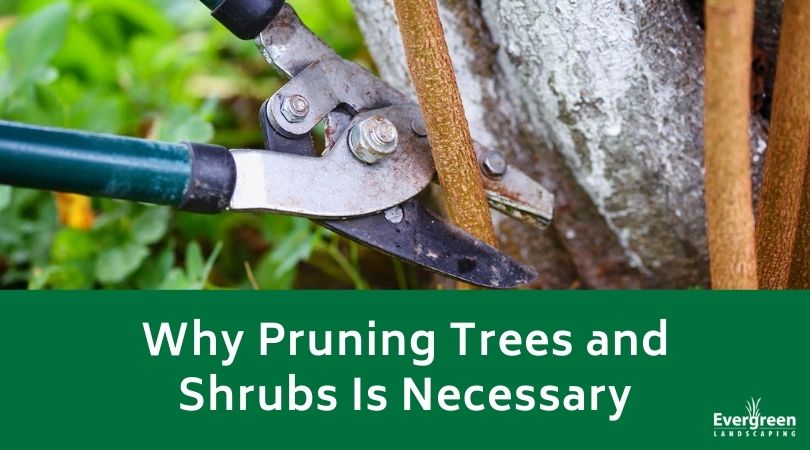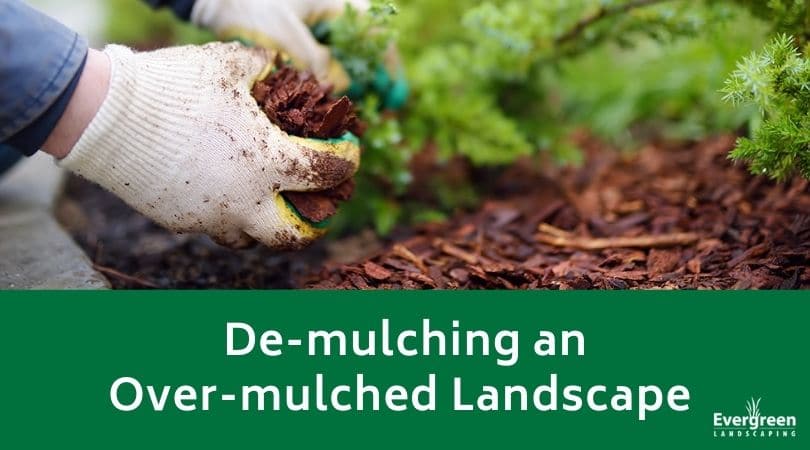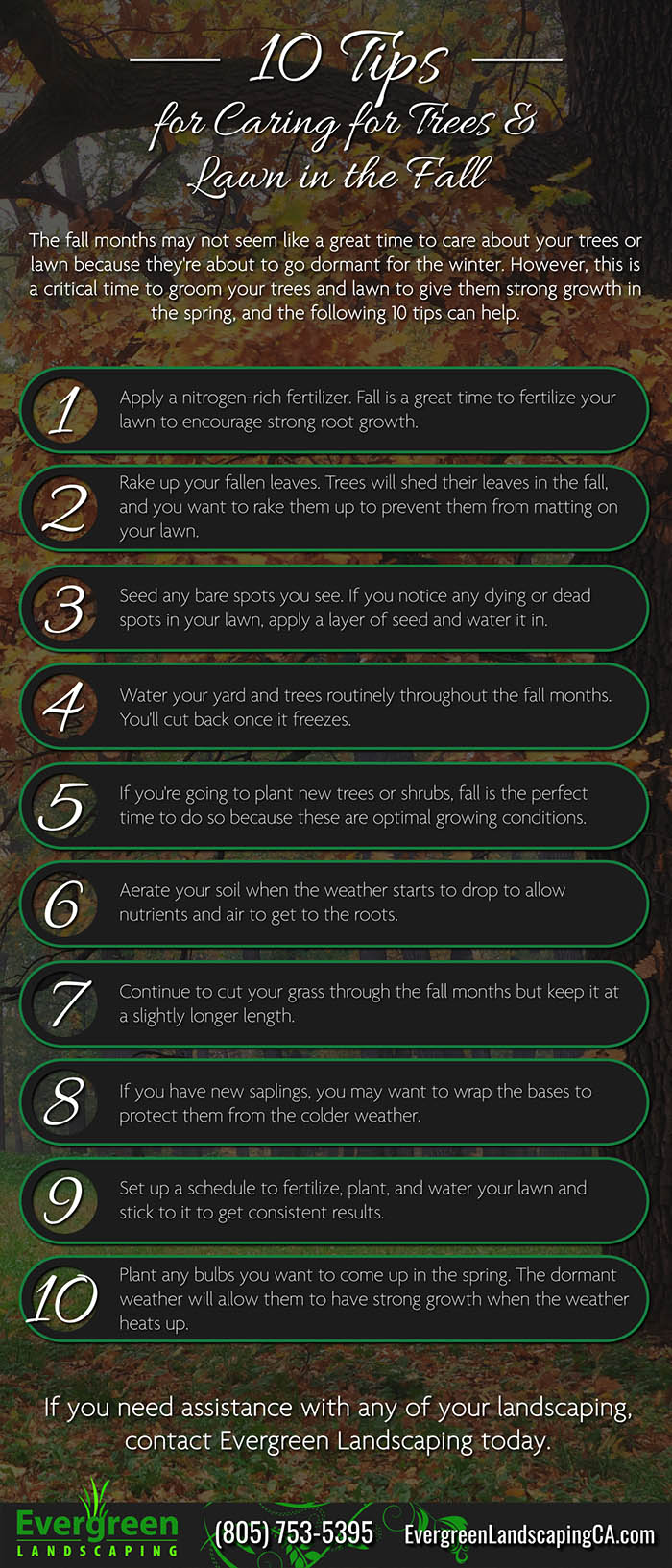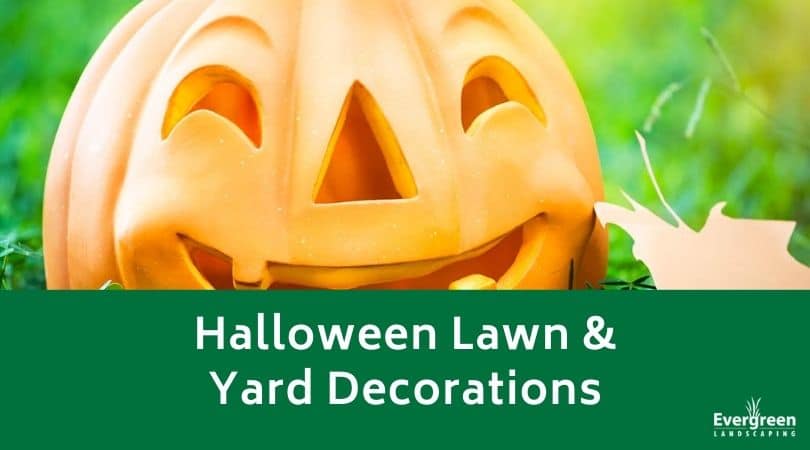7 Fast-Growing Shrubs



A tapestry lawn is a relatively new landscaping idea that involves moving away from traditional turf. You replace grass with low-growing perennial flowering plants. The goal is to create an interlaced mat that has different layers, textures, and shades that you can safely walk on. They give pollinators a greater choice of food sources from spring to early fall, and tapestry lawns require less maintenance than a traditional lawn. We’ll go over how to create one below.
Contact Evergreen Landscaping
If you’d like to know more about tapestry lawns, contact us. We’re happy to walk you through the process and help you decide if this turf option is right for you.

According to a recent report, nearly 80% of people say that a lawn is one of the top features they consider when buying or renting a home. It’s also one of the chief factors they evaluate when surveying someone else’s property.
People will notice your lawn. It’s up to you to decide whether it catches their eye for the right reasons! As we start 2022, there’s never been a better time to try out some on-trend landscaping ideas.
Today, we’re sharing some of the top designs that are already making waves, and how you can incorporate them into your own outdoor space.
In 2022, look for this trend to continue, in a big way. Gone are the days when backyard patios were reduced to nothing more than a sun-worn loveseat and a charcoal grill. Now, these areas are as amenity rich as any well-appointed room, with features that include outdoor kitchens, entertainment centers, fire pits, and much more.
As such, savvy homeowners are looking for ways to incorporate their landscape design into these new hybrid areas. One way they’re doing so is through the use of hardscape features that are as beautiful as they are functional. Against neat and minimalist landscaping, stone patios, walkways, and retaining walls add a warm dimension that elevates the entire scene.
In turn, the plants provide fruits, vegetables, and nuts for us to consume, as well as oils, fibers, and raw materials for goods. They also help prevent soil erosion. In fact, research shows that one in every three bites of food you consume is the direct result of a pollinator!
This year, eco-conscious homeowners are looking for ways to attract more pollinating insects and mammals to their outdoor gardens and landscapes. This includes adding pollinator-friendly plants that are native to their local region. Interested Californians can learn more about these plants, which include California Asters, Redbuds, and Baby Blue Eyes, among others.
For this reason, homeowners are incorporating more plants that don’t require as much water or extensive irrigation. This approach, known as xeriscaping, can save time as well as money. You can also consider gravel gardening, which eliminates the need for soil or fertilizer.
There are many different types of plants, including succulents, cacti, and ornamental grasses, that thrive in these types of environments. In a drought-prone state like California, it’s a smart move to consider.
If you have a qualified local landscaping company to take care of the work for you, then those needs might not seem so insurmountable. However, most homeowners are looking for ways to achieve a beautiful outdoor space in a cost-effective and practical way.
For this reason, 2022 is poised to become the year of garden spaces. By swapping even a small landscaped plot for a gardening area, you can cut down on the time and work required to keep your exterior looking great. If you really want to conserve your spare time, then consider hiring a professional gardener to do weekly, bi-monthly, or monthly services!
Don’t have a ton of land to harvest your own herbs, fruits, and vegetables? No problem. Space-conscious homeowners can use container gardens, vertical gardens, and raised beds to transform their patio spaces into grow zones.
While you may already be eyeing ultra-durable furniture to withstand those inevitable puppy gnaws, did you know that you can also make your exterior equally pet-friendly? For instance, you can install synthetic turf and encourage Fido to mark his territory there, saving your grassy areas from those unsightly dead spots that can occur after repeat offenses.
At the same time, adding artificial turf also help you reduce or eliminate watering and maintenance expenses. Some California homeowners may even be eligible to receive a rebate from their local water authority!
In addition to this design decision, other ways to create a lawn that your four-legged friend will love include:
Your landscaping company can also help you choose pet-safe plants, shrubs, and flowers that won’t be poisonous if your furry pal ingests them. You can check out this list for more information on the best and worst plant species to pursue.
Try These Landscaping Ideas at Home
We might be in the middle of winter, but it’s never too early to start planning your lawn and patio spaces. As we round the corner into 2022, these landscaping ideas are a great way to get inspired and motivated!
Whether you want to totally transform your backyard into a pollinator oasis or you’re envisioning a water-free gravel garden, we’ve got you covered. The team at Evergreen Landscaping is well-versed in a range of different services including landscaping, gardening, hardscape, irrigation, and more.
Contact us today to learn more about the services we can provide and let’s get started!

The keys to pruning your trees and shrubs effectively are using the right tools, simple techniques, and the correct timing for each plant species you want to keep healthy. However, before you take any sharp tools to your beloved trees and shrubs, you should understand why you’re pruning them in the first place. Every cut you make will alter your plant’s growth and shape, so we’re going to outline several reasons why you should read up on pruning your trees and shrubs below.
Pruning a growing tree or shrub stimulates new growth production. So, if you’re looking to get some vigorous new growth on a tree or shrub, you should prune it a lot. Consider pruning in this fashion when you have a tree or shrub that has a weak growth section, like in the back. If you’ve ever pinched back new growth with your fingers on smaller plants, you’ve pruned them.
If you live in an area with restricted space, pruning your trees and shrubs can ensure that they don’t get out of hand and take over. Gardeners who live in suburban or urban areas usually have to do some type of pruning to keep the shrubs and trees from outgrowing the garden, yard, or pot. Root pruning is another option that can help you restrict your container plant’s size.
Any injured, diseased, dead, or dying branches should get pruned away to keep your tree or shrub healthy. If your branches rub together, you should prune them to get rid of the possibility of damaging the main branch. Maintaining your tree’s structural soundness usually comes down to good pruning practices. You have to be careful not to top the tree because topping can make it prone to pests and weak. It can also slowly start to kill your tree over a number of years.
Pruning is a great way to coax small growth spurts for fruit and flowers on your trees or shrubs. You encourage strong flower buds when you prune things. You can easily prune them lightly during the summer to give the tree or shrub better air circulation around the fruit. This will reduce the chances of fruit diseases developing while encouraging the fruit to ripen faster.
Any trees that are by sheds, homes, play structures, or other buildings pose a threat to your safety if the tree falls, or heavy branches snap off. They can also negatively impact power or telephone lines, and pruning can help keep the property, pets, and people safe.
A lot of people’s top priority when they prune their plants is to improve the look of the garden or yard. Removing unwanted, dead branches and suckers creates a nice shape. It also leaves your plants looking tidy and neat all season long.
If you’ve never had to prune any shrubs or trees before, it can seem overwhelming to take this project on the first time. This is also true for people who have larger trees or shrubs around. You can contact the professionals at evergreen landscaping and allow our staff to come out, assess your situation, and prune your trees and shrubs to keep them healthy.

Mulching with a high-quality product can have many benefits for a plant bed in terms of insulating your plant roots and improving the soil’s moisture retention rate. However, using a poor-grade mulch can do more harm than good, especially if you pick out a processed wood mulch or one made out of processed green waste because it doesn’t feature the same decomposition benefits that hardwood mulches do.
Also, not applying it properly to your space and have a negative impact. You may make the mistake of applying two inches of mulch each time you do, but you forget to take into account the mulch that is already there. This can lead to excessive mulch layers piling up, and this can hurt your plants. Since this is such a widespread problem, you should learn how to de-mulch an area. Even if this sounds counterintuitive, it’s essential to helping restore the health of your landscape.
De-mulching is a process where you expose the root flare by taking away layers of decomposed mulch, excess mulch, and soil from the plant’s saucer down to the plant’s root flare.
When you over-mulch an area, many landscapers call this creating a mulch volcano. It’s such a common mistake that even professional-grade gardeners make it. If you’ve inherited or created a property with these so-called mulch volcanoes, it’s essential that you know how to fix it before it does a lot of damage.
One of the biggest signs that you have this problem in your landscape is not being able to visually see the root flares because they’re buried. You may notice symptoms in your trees too. One of the earliest tells that you have this problem is that your foliage will start to yellow too early in the season and drop. Over time, this can continue getting worse and creating a reduced growth rate, stunted leaf growth, and dieback on your tree’s crown. The tree is weak in this state, and it can make it more prone to developing issues with diseases. Root flare burial and over-mulching is a bigger problem for shallow-rooted tree species like dogwoods, maples, ash, birch, spruce, pin oak, and Eastern white pine.
You want to de-mulch any trees that have buried root flares, and it’s a good idea to do it on the tree beds too. You should perform this process every five to seven years at a minimum to keep your mulch heights down if you apply fresh mulch annually. This is a relatively straightforward and easy process to accomplish.
All you’ll need to de-mulch the area is a wheelbarrow and a shovel. Carefully remove any old mulch from the area using a shovel and loading it into a wheelbarrow. You can dispose of it in the compost pile, where it’ll break down if it’s an organic mulch. Apply a thin layer of fresh mulch to the area, and be mindful of how much mulch you apply each season so it doesn’t go over two inches thick.
If you’re not sure how much mulch you should apply or you need help de-mulching your area, contact us. We’re happy to help clear out the problem areas and get your plants or trees back to good health.

Since fall is here and slowly giving way to winter, and stores have started to put out their holiday items, you may be thinking about ways you can dress up your landscape and home temporarily to fit the season. November is a great time to start getting your home ready for the holidays, and it’s just around the corner. With this in mind, we’re going to list several things you can do to create a festive and fun landscape without damaging it.
Everyone always strings lights in their evergreens and shrubs, but they typically leave the deciduous trees bare and neglected. However, they’re a great way to cheer up your landscape’s overall look. Consider dressing them up by wrapping them in fairy lights around the lowest branches and the trunk. This will help draw the person’s eye to the light while taking the attention away from the bare branches higher in the tree. If you have a few trees, try to wrap the lights at the same height to give the area a balanced and symmetrical look.
String lights are versatile and festive, and you can get white or colored lights. But just adding string lights and nothing else can be boring. You can mix it up by using string lights paired with holiday-themed landscape light bulbs. Add glowing, large orbs throughout your landscape to draw the eye. Also, put something reflective close to the spot where you position or hang your lights. When it snows, the snow itself will reflect the lights to turn your home into a winter wonderland.
Swapping out the bulbs in any ground-level lighting elements you have can add a holiday flair, especially if they’re in your spotlights or floodlights. This is also a great time to update your landscaping lighting to ensure that you get a soft, welcoming unobtrusive-style lighting instead of harsh floodlights. You can combine this softer lighting with careful positioning to create enough lights to see without it being overpowering.
This is a very relaxed fire feature that encourages friends and family to gather around. They’re typically square or round, and you can even get ones that are portable, so you can move them around your patio, deck, or yard as you see fit. If you want a more permanent solution, you could partially enclose it with high-backed masonry seating. Not only will this make the area more comfortable, but it’ll help hold the heat in while blocking those chilly winter winds. Add a few blankets, pillows, comfortable cushions, and cheerful lights to help create the perfect gathering spot.
If you want inspiration or help to turn your landscaping into a pretty winter wonderland, contact us. Our talented staff is ready and willing to give you ideas, help you find the correct materials, and ensure that you have a gorgeous temporary winter landscape for the holiday season.


The fall months may not seem like a great time to care about your trees or lawn because they’re about to go dormant for the winter. However, this is a critical time to groom your trees and lawn to give them strong growth in the spring, and the following 10 tips can help.
If you need assistance with any of your landscaping, contact Evergreen Landscaping today.

Climate change is starting to affect everything we do, both small and big, in ways that may not be immediately apparent. Other ways might be readily felt, and gardening is a very unique activity that climate change can impact during every process you do. However, there are several things you can do to rethink your landscaping to meet climate changes this season.
Try to use energy-efficient products whenever you can and reduce the amount of energy your household uses. This will reduce how much you contribute to carbon pollution. Try to replace your outdoor lights with efficient LED bulbs, purchase solar-powered lights to stick around your yard, or consider installing lights on timers that automatically go off at dawn.
Try to avoid using gasoline-powered landscaping tools like leaf blowers, chainsaws, or lawnmowers. You can use human-powered tools instead like hand clippers, manual pruners, push mowers, and rakes to help keep your lawn neat and tidy. Using a gasoline-powered mower for just over an hour can put 10 to 12 times the amount of pollution into the air.
There are several ways you can reduce how much water you use in your garden or landscape, and this is very important due to the increased instances of droughts and heatwaves. You can install a rain barrel, apply a layer of mulch, use drip irrigation systems, or adjust your watering schedule. Mulching will also add nutrients to the soil around your plants, and this reduces how much fertilizer you need to use.
Trees can easily absorb and store a huge amount of carbon pollution from the atmosphere. If you and every other gardener in the United States made a point to plant one young shade tree in your community or backyard, the trees would absorb one to two million tons of carbon pollution every year. Also, planting shade trees near your home can reduce how much energy you use to cool the house in the summer.
Ideally; you’ll incorporate diverse native species into your garden and landscape instead of invasive ones. Removing the invasive plants can reduce the threat of them taking over and spreading, and native plants also help pollinators to ensure that they have viable food sources. An invasive plant can compete and overwhelm the native species to force them to die off. To stay ahead of this process, contact a local nursery and find out what native plants would look nice in your yard.
The final thing you can do is to compost kitchen and garden waste. Composting these items can reduce how much you contribute to carbon pollution, especially methane. This is a very strong greenhouse gas. Composting also gives your plants a great source of nutrients to encourage strong and healthy growth. In turn, this reduces the need for chemical fertilizers.
If you’d like to know more about how to landscape for climate changes, contact us. Our staff is on hand and ready to answer your questions and help you transform your landscape.

With fall right around the corner, many people’s thoughts turn to Halloween. Halloween means putting up yard and lawn decorations, but how early should you put them up? Do you go with a specific smaller theme, or do you want more elaborate ideas and displays? If you have lights, what about your electricity consumption? We’ll answer all of these questions and more for you below.
Generally speaking, the most popular time to start putting up your decorations for Halloween is inside the first two weeks of October. However, it’s not uncommon for people to start putting their Halloween decorations up as early as the last two weeks of September. The scale of your decorations will help you decide your timeline.
Maybe you have elaborate plans, and you go all out for your Halloween decorations. If you’re planning on transforming your home into a full-fledged haunted house that spills out into lawn decorations, you’ll want to start decorating in late September to give yourself an ample amount of time to finish before the holiday comes around. The same goes for more intricate setups in your home or yard. If you’re just going to keep it simple, you can wait until early October to start decorating. This will give you plenty of time to finish before the 31st.
You don’t want to go with the same old design or idea this year. Instead, start looking for inspiration for your theme early. Go on the web and look for Halloween decorating ideas on Pinterest or do a simple Google search. Google will bring up thousands of ideas that range from simple and chic to full-on graveyards, zombies, or haunted houses. Most websites have step-by-step instructions available to make various decoration items too.
How long you’ll keep your decorations up is a personal choice. Some people are out taking them down the day after Halloween, and other people leave them up for up to two weeks after the holiday. You can always pull your Halloween-specific decorations and keep your fall decorations up until after Thanksgiving. Generally, keeping them up two weeks after Halloween is too long, especially if you have a huge setup on your house and yard that is very noticeable. If you have bare spots, you can fill them in with Thanksgiving-specific decorations or add more fall decorations until you swap out for Christmas.
Whether or not you incorporate lights into your display will determine your electricity consumption. Again, more elaborate displays can incorporate a decent amount of lights. You can get Christmas-style lights in shades of orange and black. Depending on the lights you get, they can cost between $0.41 and $3.50 to run for several weeks per strand. If you get LED lights, this will lower your electricity consumption while keeping them shining brightly from the time you put them up until you take them back down for the season.
As a rule of thumb, you should know that the heavier the decorations are, the more damage they can and will do to your lawn. Avoiding heavy decorations can protect your lawn from root tearing or mold. Your lawn can also sustain damage from excessive foot traffic or heat, so you want to have clearly marked pathways with lights on timers. This will minimize how much wear and tear your lawn has. If you have light decorations and you want to have them up for weeks, you may want to plan to move them at least once, so you don’t kill your grass.
If you’re looking for ways to protect your lawn and set up your Halloween decorations, our staff are ready and willing to help. You can contact us today with any questions or concerns you have regarding this project to ensure that you get the Halloween setup you want without sacrificing your lawn or yard.

Ornamental grass gives you almost nonstop performance, visual impact, and strength. Unlike turfgrass or lawn varieties, ornamental grasses are meant to be grown instead of mowing or cutting them as part of your landscape. You’ll be amazed by how many varieties are available when you dive into these grasses, and they come in a range of shapes, sizes, and colors. We’ll outline a few popular varieties for you below.
With this ornamental grass, the seeds are at the very tips of the feather-like blades, and they move in very gentle winds. It can spread and show up all over your yard, including in sidewalk cracks and in your neighbor’s yard. It does well in dry conditions and with being cut back, and it can be invasive. It grows best in zones 6 to 10 in full sun to part shade. The soil should be loamy, well-drained, and acidic for it to grow strong.
This grass is also called porcupine grass, and it has green and pale yellow strips on each blade. It’ll die back in the winter months before coming back in the spring, whether or not you trim it. It can get up to five feet tall and five feet wide, and it can lend a very tropical, exotic look to your space. It does well planted near-tropical, broad-leafed plants with colorful flowers like hibiscus, ginger, or canna. Plant it in zones five to nine in full sun. It does well in any soil type, from chalk or clay to loam or sand.
This ornamental grass has a fountain-like, striking form with a reddish-purple color. It also produces feather-like flowers that allow you to view it from a distance, and you’ll grow it as an annual in cold-weather areas where it freezes. It’ll get between two and five feet tall and two to four feet wide at full maturity. It’s considered to be a low-maintenance addition, and all you have to do is cut it back to a foot high in the fall when it dries out. Plant it in zones 9 and 10 in full sun to partial shade. The soil should be well-drained and medium moisture.
This ornamental grass grows in upright clumps that spread underground using runners. It does best if you plant it in rich, damp soil, and it likes more moisture during the hotter parts of the day. If the soil gets too dry, the plant will wilt and eventually die. It’s also considered to be invasive in some areas due to the rapid growth habit. You’ll get the best results if you plant it in zones five to nine in full sun to partial shade. The soil should be moist but drain very well after you water it.
If you want to know more about ornamental grasses for your yard, contact us. Our staff is ready to help discuss your options, pick out a few types of grass, and ensure they do well in your yard.